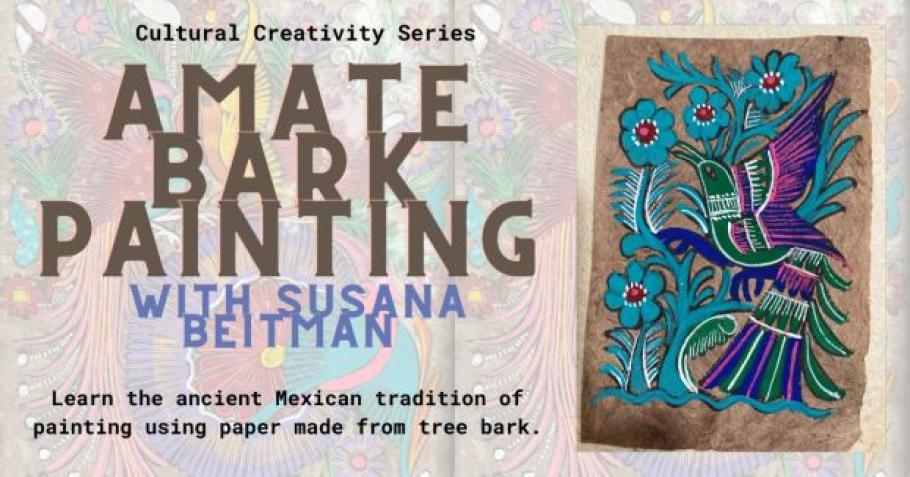
This workshop is part of the Cultural Creativity Series at the Tett Centre for Creativity & Learning, which aims to foster cultural learning through artistic creation. Participants will explore various art forms from different cultures, learning about each culture's unique expressions, history, and context.
Amate bark painting is an ancient Mexican tradition involving the painting of paper made from tree bark. The art of amate bark painting dates back to the ancient civilizations of the Maya and Nahua people. They each had their own traditions and ways of communicating with amate bark paintings. In the Nahuatl language, the name for the bark paper was amatl. The term amatl is where the name amate paper originates from.
In this workshop, participants will dive into the history and process of using amate paper, exploring its significance and cultural roots among the Maya and Nahua people. They will also discover various visual symbols and representations unique to these civilizations. Through hands-on experience with amate paper and acrylics, participants will learn to replicate this artistic style and create their own unique pieces.
Ages 16+ | Beginner Friendly
Registration
CAD $25 | Register on Eventbrite
About the Instructor
Susana Beitman (she/her) was born in Mexico City and came to Canada, specifically to Kingston, many decades ago. She has a Masters in Spanish Language and Literature, and a Bachelor of Education, both from Queen’s University, plus a Bachelor of Communication. In her long and diverse career she has been a photographer, a journalist, a translator and interpreter, and a published author, and she is also certified as a Chef by Algonquin College. During the last two years she taught Spanish as an adjunct professor at Queen’s University.
As a Spanish teacher, she has always believed that expressions like art, music, dance, literature, food, and history as well as many other cultural forms, give meaning to the learning of a language. During her 20 years teaching Spanish she organized immersion experiences in Mexico for groups of students. While there she contacted local artists who taught her the many different artistic expressions of various indigenous groups and of artists of different backgrounds. She then brought back all the necessary materials to be able to teach what she had learned. Susana has been a firm believer of teaching acceptance of differences and diversity through instilling in her students an understanding of the ethnic groups that exist within one single country.

